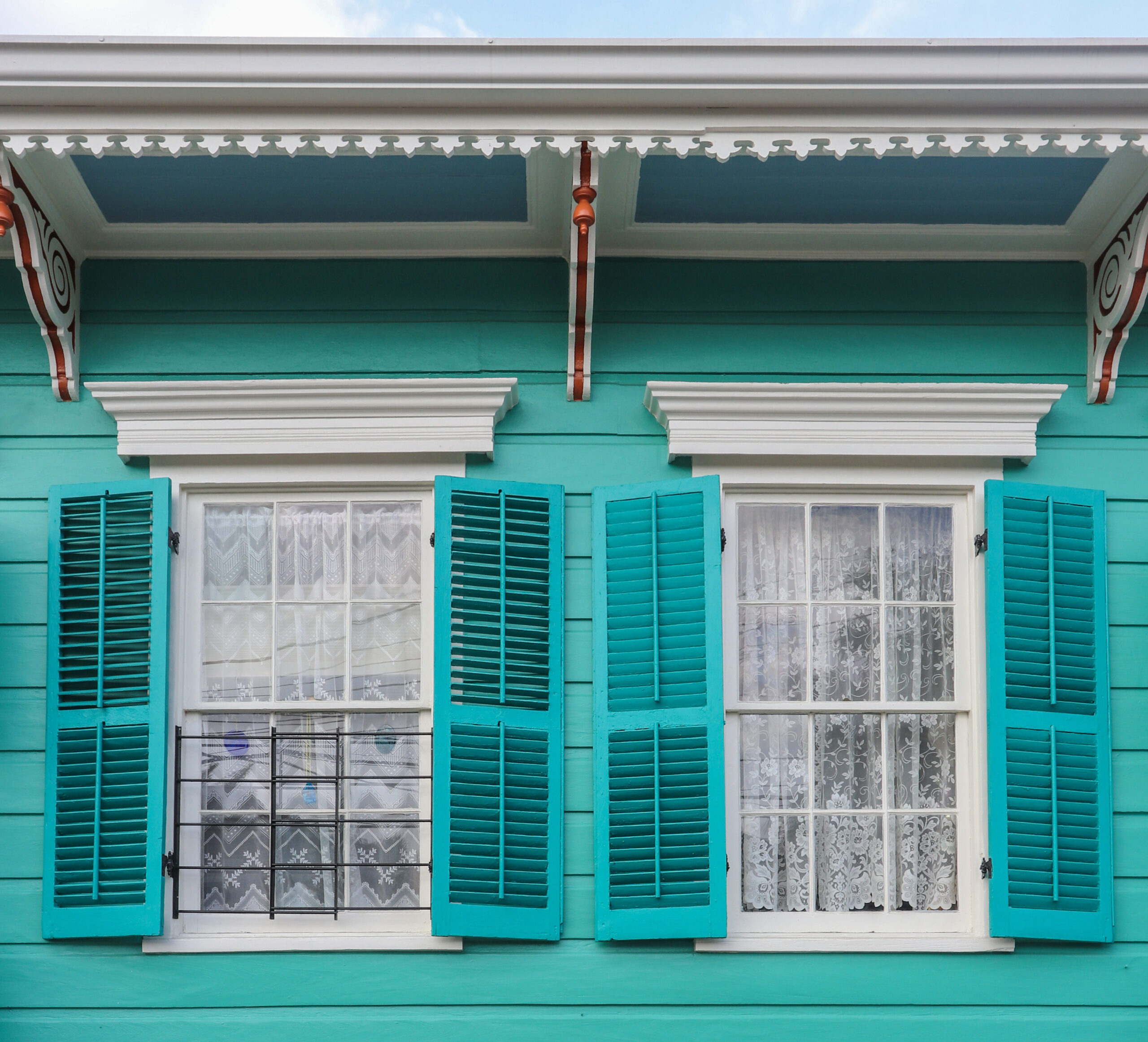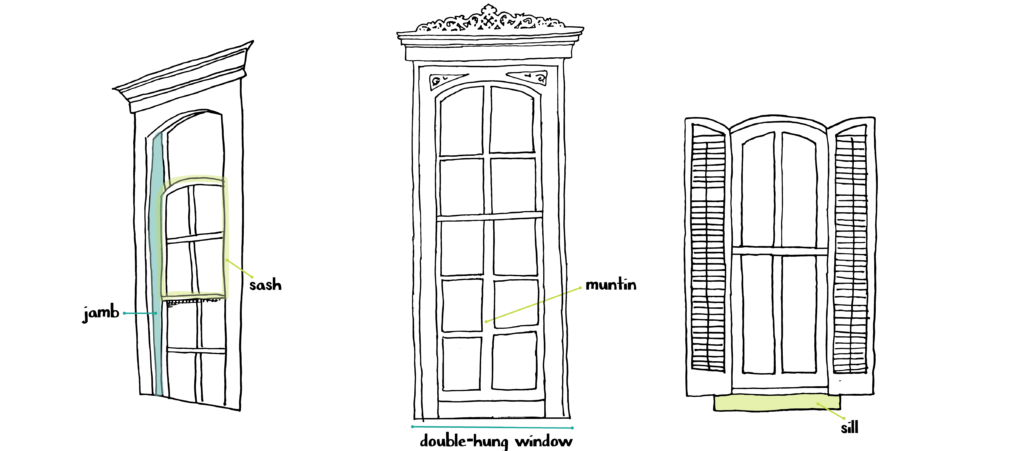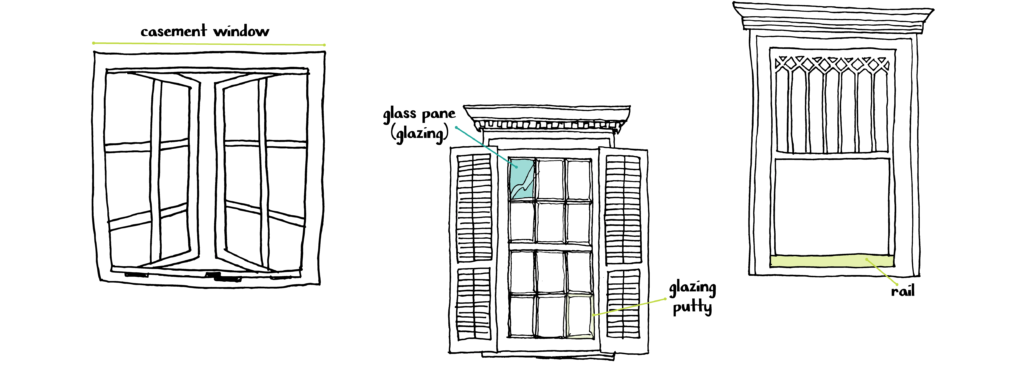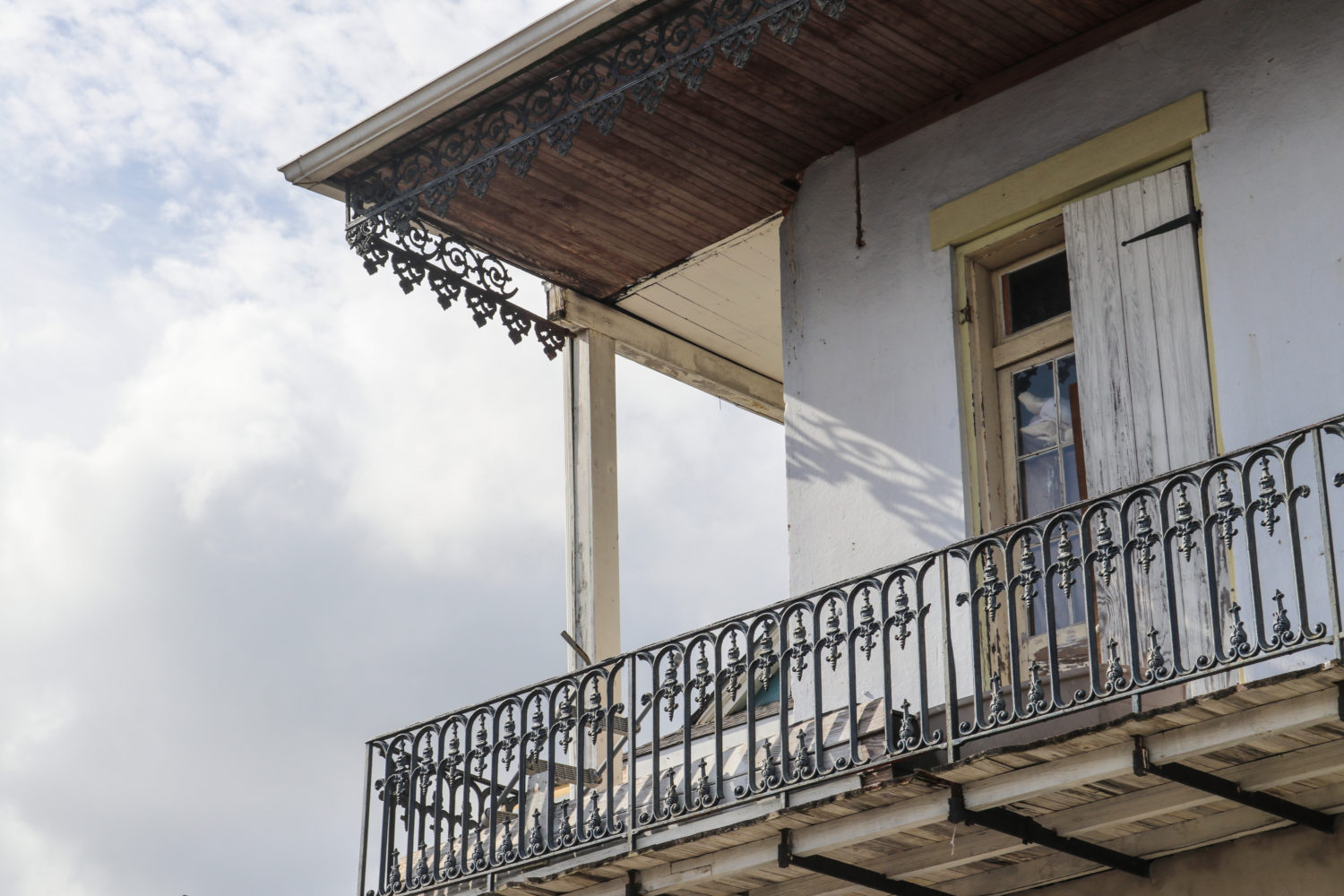Tune into to “How to Repair, Restore and Reglaze Your Wood Windows” on April 6 for a free, virtual “hands-on” demonstration by Bill Robinson of Train2Build. Learn more and register.
This story appeared in the April issue of the PRC’s Preservation in Print magazine.
Homeowners’ relationships with their historic wood windows can be a lot like dating. In fair weather, it’s easy to appreciate the windows’ beauty and craftsmanship; but when the seasons change, temperatures become less hospitable, and drafts find their way inside, those architectural details might not seem as charming. Owners of historic houses and buildings might be tempted to dump their original wood windows — which often get blamed for drafts and rising energy bills — and install vinyl or metal replacements.
But don’t give into that temptation. With proper maintenance and a few modifications, it’s easy to love your wood windows while saving the environment and your budget — and preserving some of a building’s most important historic features for future generations to enjoy.
Preservationists have long touted the environmental benefits of historic buildings, often asserting that the “greenest building is the one that is already built,” because existing buildings hold embodied energy — the energy used during construction and manufacturing building materials. Avoiding demolition and salvaging that energy through reuse almost always outweighs the environmental benefits of modern energy-efficient buildings.
Advertisement
Repair, not replace
Historic wood windows made of hardy old-growth woods can last for centuries if regularly maintained. On the other hand, many new replacements — especially those made of vinyl, PVC or aluminum — have a much shorter lifespan of a few decades. While individual parts of traditional wood windows can be repaired and replaced, modern replacement windows typically require replacement of the whole unit when one component fails. Restoring an existing wood window keeps these materials out of a landfill and avoids the energy consumption required to manufacture and ship them.
Most houses have been retrofitted with modern HVAC systems, but operable wooden sash windows during milder months can be an environmentally friendly way to keep interior temperatures comfortable without the need for air conditioning. Before modern-day heating and cooling systems, historic buildings were designed to work with the climate, and windows played an integral part in passive heating and cooling.
In warm New Orleans, tall double-hung wooden sash windows allow breezes to enter the house and keep it cool. As the air inside warms and rises, lowering top window sashes ventilates the hot air outside, while raising bottom window sashes draws cooler air and breezes inside. If a house’s original double-hung windows no longer work, removing built-up layers of paint along the jambs and repairing deteriorated weight-and-pulley systems, hidden inside the frame, are good starting points to make the windows operable again.
Stop drafts
If window drafts become apparent during the winter, the first step is to check for deteriorated components. Broken panes of glass, missing or deteriorated glazing putty — the material that holds glass panes into the wooden sash — and rotted wood are common culprits to address first.
“Replacement of an entire wood window because of a deteriorated component, typically the sill or the bottom rail, is rarely necessary,” explains the New Orleans Historic District Landmarks Commission’s Guidelines for Windows and Doors. Deteriorated wood windows often can be brought back to good condition with “selective repair or replacement of damaged parts and the implementation of a regular maintenance program,” the guidelines say. If a wood window’s deterioration goes beyond a homeowner’s DIY prowess, New Orleanians can turn to one of the city’s many wood window experts to repair and replace components.
“In many cases, the condition of the paint is worse than the condition of the wood beneath,” said Brooke Cranford, sales director at New Orleans-based Inhab Millworks. When assessing the level of repair, the shop looks to the National Park Service’s Preservation Brief 9: The Repair of Historic Wooden Windows to determine a window’s best treatment. “The entire sash does not have to be replaced for a few deteriorated muntins. We can also replace the sill of the window without having to replace the entire jamb,” she said.
“We always remind our customers that paint acts as the first line of defense when it comes to protecting their windows,” Cranford said, “which is why it is imperative to be proactive with paint maintenance.” NPS’s Preservation Brief 9 recommends stripping paint that is flaking or peeling, or excess layers of built-up paint, starting with interior frames, window jambs and then the sash, before examining the condition of the window’s other components, making repairs and repainting.
“If the sash and jamb are failing completely due to structural issues with the building or blight, we fabricate a new window to exactly match the historic original,” Cranford said. The millwork shop can match intricate details, and typically uses Spanish cedar or Red Grandis to fabricate new wood windows, depending on the project and the client’s needs.
Online class: How to Repair, Restore and Reglaze Your Wood Windows
Monday, April 6 • 2 – 3 p.m. Learn more and register!
In this virtual “hands-on” video tutorial, Bill Robinson of Train2Build will show you how to bring your historic wood windows back to life by identifying major building components and materials and demonstrating step-by-step how to take a window apart, repair it and put it back together.
Weatherize
Weather stripping and caulking around window openings are among the least invasive and cost-effective ways to weatherize windows and reduce air infiltration, according to the National Park Service’s Illustrated Guidelines on Sustainability for Rehabilitating Historic Buildings. The New Orleans HDLC recommends installing weather stripping on the interior of a window between sashes, around sash perimeters and behind sash tracks. When applied to moving window parts, weather stripping can become loose or damaged, so regular maintenance checks can ensure that windows remain airtight.
“We use polypropylene weather seals for their longevity,” said Geovanny Ramos, shop director at Inhab Millworks. “Casement windows require a compression application and hung windows require a sliding application. We can also use thicker glass or insulated glass to help with energy efficiency,” he said.
On the exterior, the New Orleans HDLC recommends using caulk to close perimeter joints along the window frame exterior “where two dissimilar materials meet; where expansion and contraction occur; or where materials are joined together,” the Guidelines for Windows and Doors say.
Illustrations by Liz Jurey
Raise energy efficiency with window inserts
The addition of a window insert can further increase the energy efficiency of a historic wood window, making its performance comparable to modern windows at a fraction of the cost of full replacement. Interior storm window panels also maintain a historic window’s exterior appearance while improving energy performance.
The panels reduce noise infiltration and can reduce potential interior exposure to lead-based paint. Magnetite Windows have been used on many historic houses and commercial projects in New Orleans, including the Sazerac House and the Old No. 77 Hotel. The panels “create a magnetic seal around a clear acrylic glazing,” said Buddy Roussel, owner of Baton Rouge-based Magnetite Works LLC, which makes energy-efficient window panels. “This nearly airtight seal keeps the outside air from leaking through the existing window and keeps the conditioned air in the home,” he said.
Advertisement
Protect from sun’s heat
New Orleans summers are notoriously hot and humid, but the swings in temperatures in our climate are mild compared to other parts of the country. Heating a building in the Midwest during the winter — when the exterior temperature can be far below freezing and the interior temperature needs to be around 60 to 70 degrees — requires far more energy than cooling a building in Louisiana during the summer. In New Orleans’ climate, shading windows can significantly reduce a building’s solar heat gain, reducing the energy used to air condition a home’s interior.
“Single-pane wood windows can be easily retrofitted to perform virtually as well as manufactured, state-of-the-art windows,” said Andrew Spaulding, an architect with New Orleans firm Jahncke & Burns. “In fact, there are several low-tech strategies that predate glass windows themselves, among these would be operable shutters, deep overhangs and shade trees.”
Interior curtains, blinds and solar shades help to reduce solar heat gain in the summer, and can be raised — especially along south-facing windows — to take advantage of the sun’s warmth in colder months. In the winter, insulated shades can be lowered at night to retain heat. On the exterior, awnings that are compatible with a building’s historic character can shade windows and storefronts to further reduce solar heat gain. Operable exterior shutters provide shade and privacy, as well as additional protection from storms and hurricanes.
To further reduce heat gain, Low-E (or “Low Emissivity”) surface films can be applied to the interior surfaces of glass window panes to filter the sun’s rays. The self-adhesive plastic films have a coating that reflects infrared radiation and UV rays, allowing light through the glass while reducing the sun’s heat.
Advertisement
WINDOW TERMS
Casement — A window sash hinged on one side so that opens by swinging in or out.
Double-hung — A window with two sashes that slide past each other vertically.
Glazing — The clear or translucent material, typically glass, through which light passes.
Glazing putty — A type of sealant used at the edges of a pane of glass to prevent leakage of air or water.
Jamb — The vertical facing sides of a window opening.
Muntin — The small molding or bar that separates the individual panes of a multi-paned window sash.
Rail — A horizontal wood framing member of a door or window sash.
Sash — The part of a window frame that holds the glazing, especially when movable.
Sill — The projecting horizontal base of a window or door.
Weather stripping — A narrow, compressible band used between the edge of a window and the jambs, sill and head to seal against air and water infiltration.
Source: Dictionary of Building Preservation
Davis “Dee” Allen is PRC’s Communications Associate and a staff writer for Preservation in Print.
Advertisements













